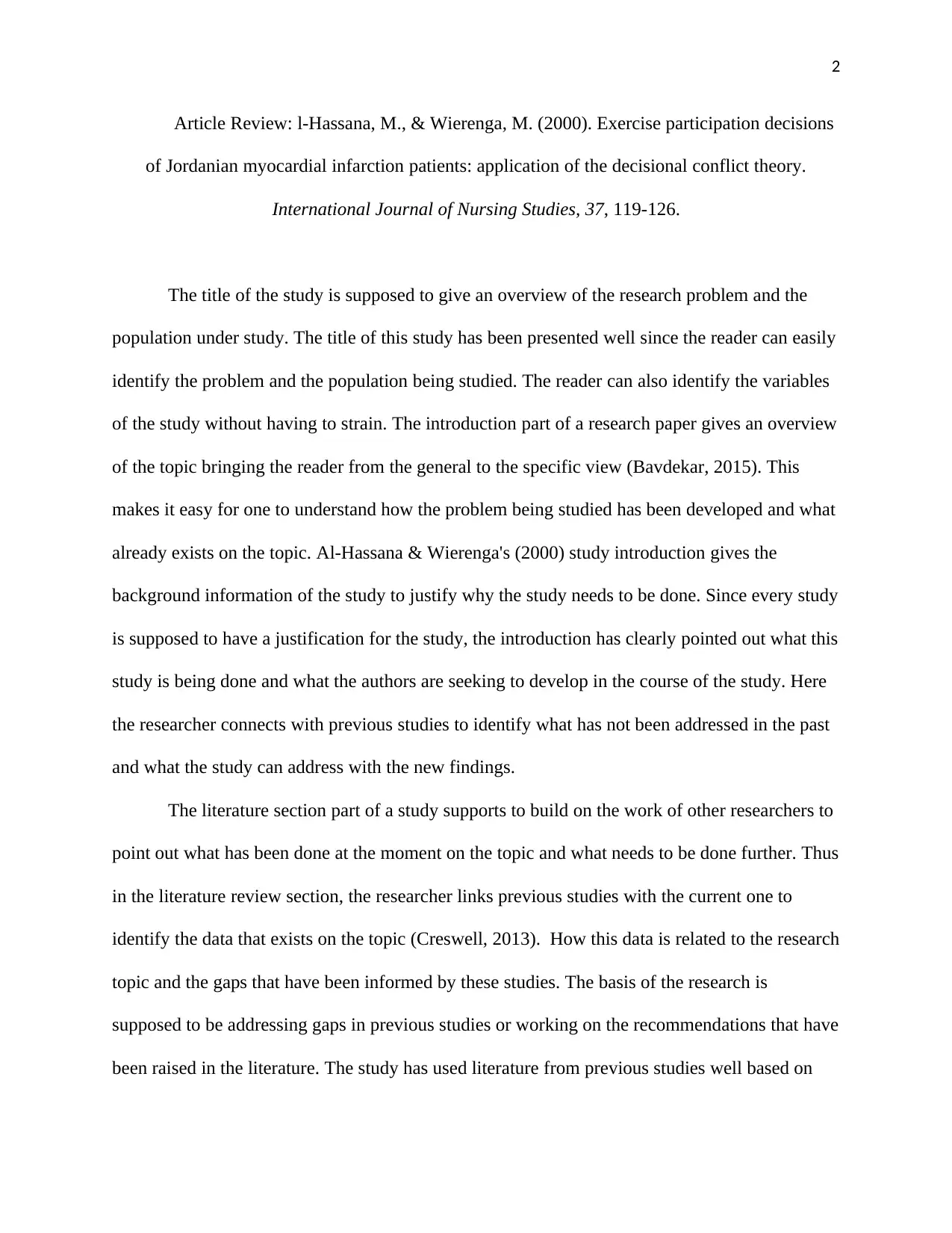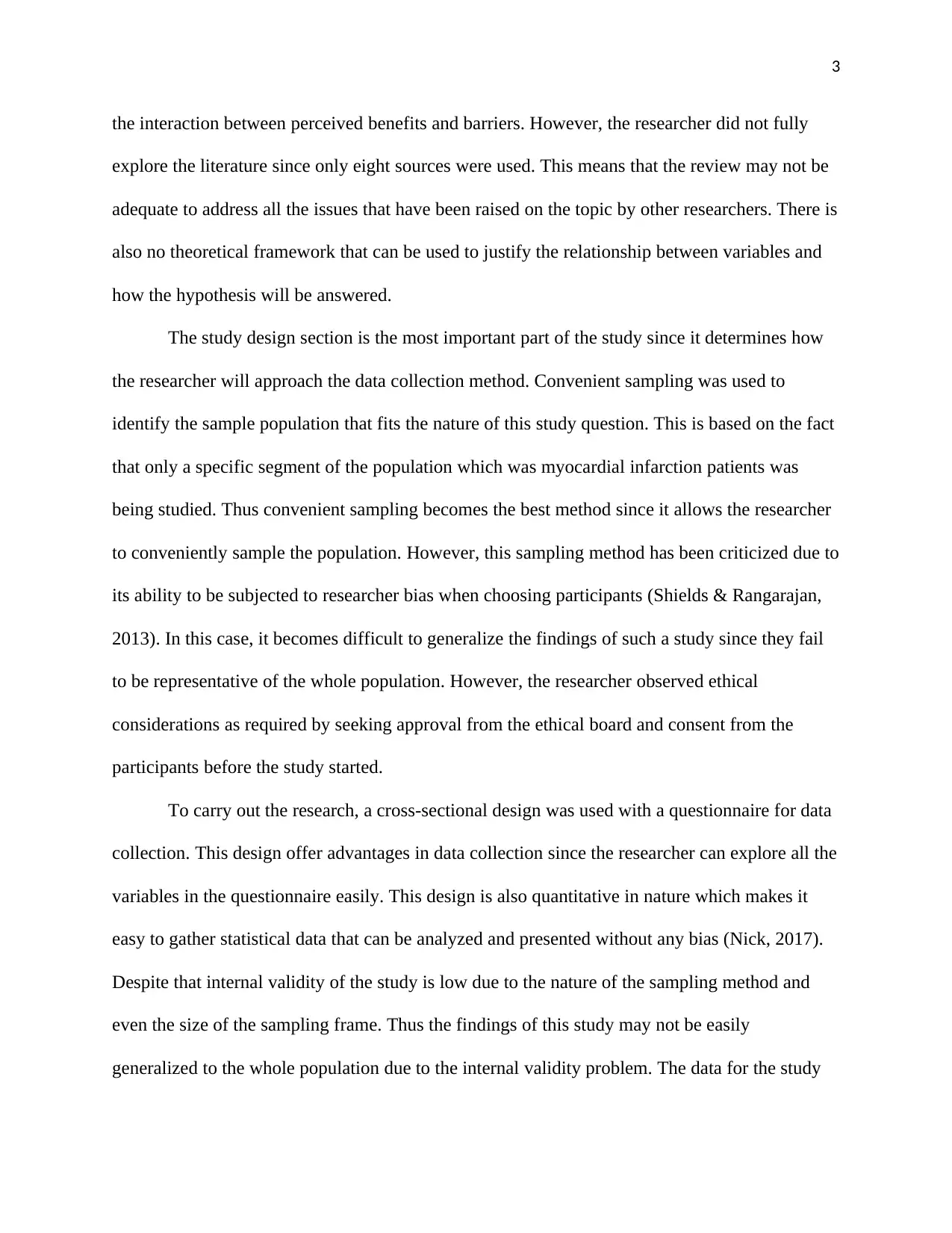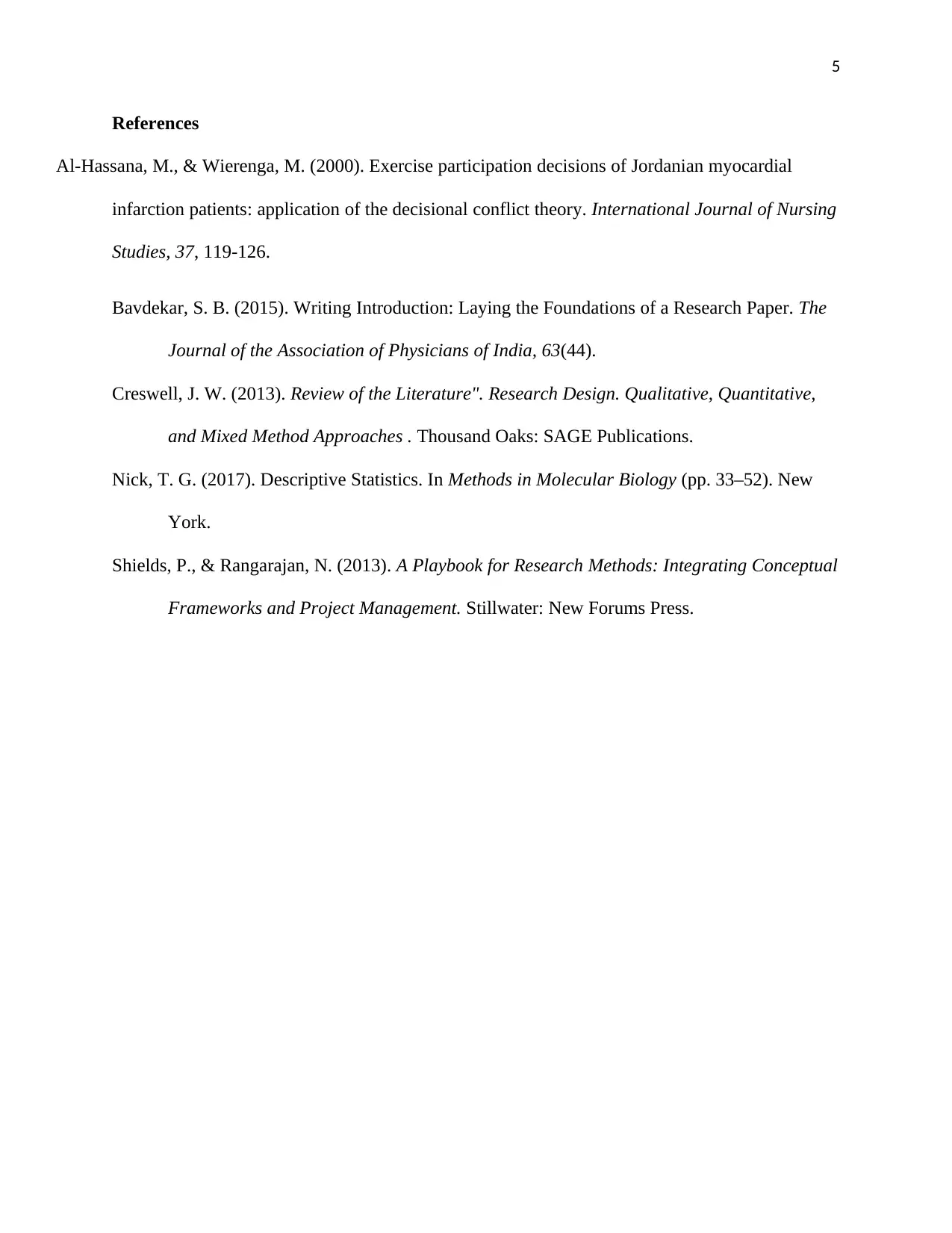University Article Review: Exercise Decisions of Jordanian MI Patients
VerifiedAdded on 2022/09/07
|5
|1090
|22
Report
AI Summary
This document presents a comprehensive review of an article focusing on exercise participation decisions among Jordanian myocardial infarction (MI) patients, applying Janis and Mann's decisional conflict theory. The study, conducted in Jordanian military hospitals, employed structured interviews with 88 MI patients to assess the impact of benefits and barriers on exercise decisions. The review critically evaluates the study's title, introduction, literature review, study design (including sampling and ethical considerations), data analysis, and limitations. It highlights the use of convenient sampling and a cross-sectional design with a questionnaire for data collection. The review also discusses the statistical methods used (means, Pearson correlation, and regression analysis) and the challenges in generalizing the findings due to the sampling frame and method. The reviewer notes that the study's findings, while potentially useful in nursing, require further research with a larger sample size for broader applicability. The review concludes by summarizing the key findings and limitations of the study.
1 out of 5












![[object Object]](/_next/static/media/star-bottom.7253800d.svg)